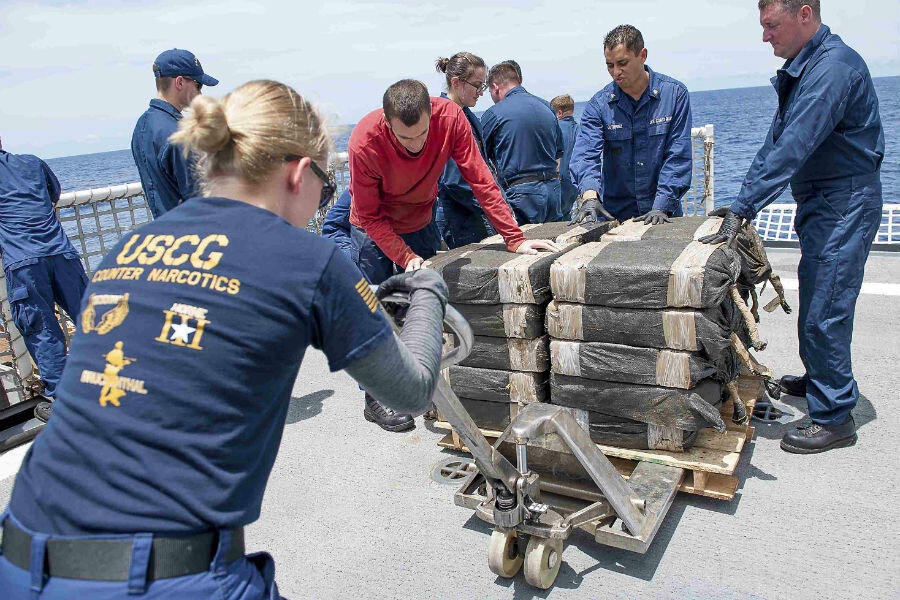Coast Guard makes record $181 million cocaine haul from another 'narco-sub'
Loading...
The US Coast Guard has been intercepting submarines transporting illegal drugs, also known as “narco-subs,” for nearly a decade. But last month, a crew off the coast of Mexico made one of its biggest busts yet, officials said Thursday.
On July 18, the Coast Guard Cutter Stratton seized from a homemade submarine a haul of cocaine worth at least $181 million, reports NBC News.
Officials took four suspects into custody. They were able to recover 275 bales – weighing 12,000 pounds – of cocaine from the boat before it sank in the Pacific, about 200 miles south of Mexico. On board were another 4,000 pounds.
Since 1997, the Coast Guard has seized around 806,000 pounds of cocaine and 333,000 pounds of marijuana, according to an official statement posted last October.
At least 25 of the raids took place on submarines that were stopped in the eastern Pacific and often carrying thousands of pounds of drugs, reports NBC. “We can’t afford not to,” reads a slogan on the Guard's website.
What helps Colombian drug lords elude law enforcement is a customized mode of transport, particularly effective even in high-speed chases out at sea. Over the years, smugglers have enlisted engineers to conceive and build submarines ranging from semi to fully submersible vessels, “constructed under the canopy of the Amazon, then floated downriver in pieces and assembled at the coastline,” according to The New York Times.
The submarine caught last month was described as a blue semi-submersible, one of the cartels’ longtime favorites, officials told NBC. Another recent bust in June had found more than 5,000 pounds of cocaine aboard a semi-submersible.
“All that you can see is the exhaust pipe and the cockpit from air, so they're very difficult to see,” Coast Guard Chief Warrant Officer Allyson Conroy said.
One reason hauls of this magnitude are so uncommon is that smugglers have arranged a backup plan in the case that they’re caught and arrested. The Times reports:
These vessels can cost more than a million dollars, but to the smugglers, they are effectively disposable. In the event of an interception by the Coast Guard, someone onboard pulls a lever that floods the interior so that the evidence sinks; only the crew is left bobbing in the water, waiting to be picked up by the authorities.
Coast Guard Vice Admiral Charles W. Ray, commander of the Pacific area, praised the landmark seizure, calling it an important step in helping deter the infamously adept, well-financed cartels.
“Every interception of these semi-submersibles disrupts transnational organized crime networks and helps increase security and stability in the Western Hemisphere,” he said in a statement.






